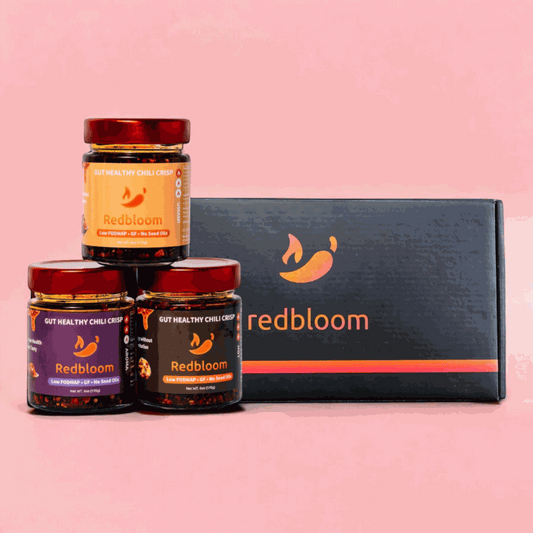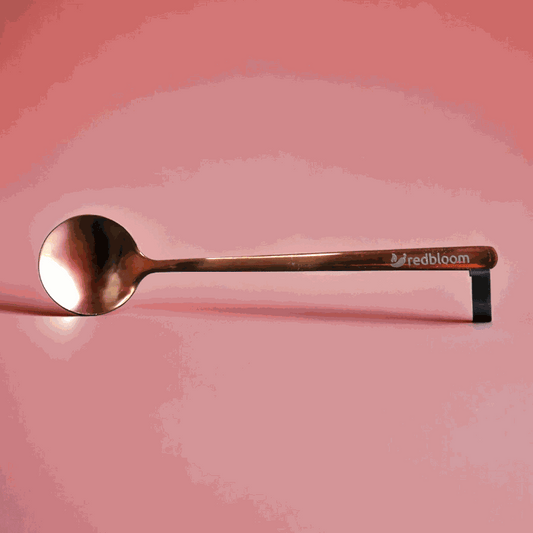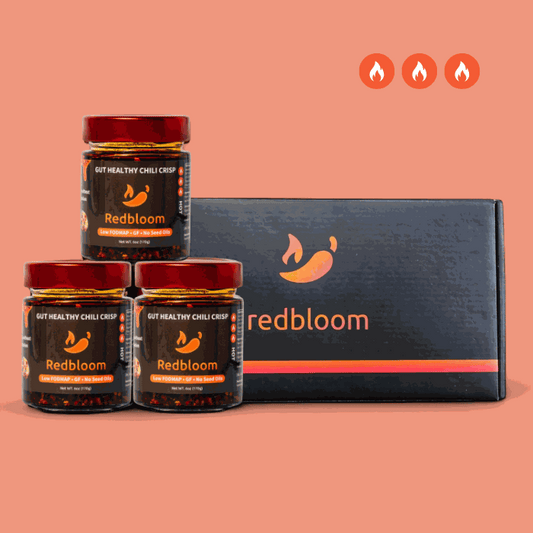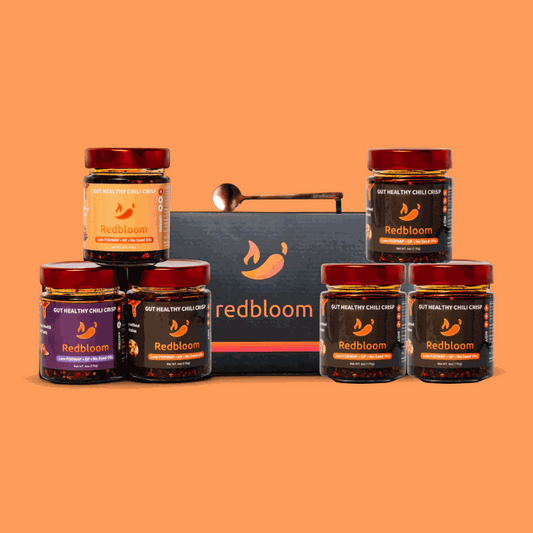Introduction
Why do some people chase the burn of hot sauce or chili crisp—even when it leads to watery eyes, a runny nose, or even stomach cramps? The answer lies not just in your taste buds but in your brain, emotions, and cultural wiring.
Spice cravings aren't irrational—they’re the result of a complex interplay between neurochemistry, nostalgia, thrill-seeking, and even evolutionary biology. In this blog, we explore why your brain craves capsaicin, the molecule that gives chili its fire, and why you might keep reaching for more—even when it hurts.
Capsaicin and the Brain: Pain That Feels Good
1. Endorphin and Dopamine Release
Capsaicin binds to TRPV1 pain receptors, which normally respond to heat or abrasion. Your brain interprets this as a mild injury, triggering the release of endorphins—your body's natural painkillers—and dopamine, a neurotransmitter associated with reward and pleasure [1][2][3].
This results in a phenomenon often called the “spicy high”: a euphoric rush that temporarily masks the discomfort, creating a paradoxical pleasure from pain.
2. Adrenaline and Alertness
The brain also responds to capsaicin as if it were a threat, causing a mild fight-or-flight response. This increases adrenaline levels, making you feel energized and mentally sharp [1][2].
3. Desensitization Over Time
With regular exposure, TRPV1 receptors desensitize, meaning it takes more capsaicin to achieve the same level of perceived heat. The pain drops, but the neurochemical reward remains, encouraging further consumption [1][4].
Cultural Conditioning and Nostalgia
Spicy cravings aren't just biochemical—they're learned and reinforced by culture.
1. Childhood Exposure
In countries like Mexico, India, and Thailand, spice is introduced early. Children grow up equating heat with flavor, comfort, and family. By adulthood, spicy food isn’t a challenge—it’s a cultural comfort food [1][5].
2. Social Bonding
Spice is often a communal experience—think chili cook-offs, hot wing contests, or mukbang videos. Sharing spicy meals fosters connection, laughter, and sometimes a little competitive bravado [1][5].
3. Historical Evolution
Spices like chili originally had antimicrobial properties, which helped preserve food in hot climates. Over generations, their practical use evolved into preference, embedding spice into national cuisines [1][5].
The Psychology of Thrill-Seeking
1. Benign Masochism
Coined by psychologist Paul Rozin, this term describes the enjoyment of “safe pain.” Like rollercoasters or horror movies, spicy food delivers a jolt to the senses without real danger—making it pleasurably intense [5][4].
2. Sensation Seeking
People who score high on sensation-seeking scales are more likely to enjoy spicy food. For them, the burn isn't a downside—it’s part of the fun, a way to challenge themselves and explore their limits [5][4].
3. Emotional Associations
If you grew up with spicy food at family dinners, celebrations, or late-night snacks, your brain forms positive emotional associations. These memories can override physical discomfort, turning spice into a source of comfort—even when it hurts [1][3].
Individual Differences: Why It Hurts More for Some
Not everyone experiences capsaicin the same way. Here’s why:
| Factor | Effect on Spice Tolerance |
|---|---|
| TRPV1 receptor density | More receptors = more sensitivity to heat |
| Genetics | Some people inherit higher spice tolerance |
| Upbringing | Early exposure builds lifelong comfort |
| Personality | Sensation seekers enjoy the challenge |
So if your friend devours ghost peppers like candy while you sweat from mild salsa—it’s not weakness. It’s biology, psychology, and habit.
So Why Do We Keep Craving Spice?
It comes down to a few potent forces:
-
Neurochemical reward: Endorphins and dopamine make you feel good
-
Cultural identity: Spice equals tradition, family, and belonging
-
Adrenaline rush: A safe, legal jolt of excitement
-
Self-testing: A fun challenge that boosts confidence
-
Comfort and nostalgia: It reminds us of home—even if it hurts a little
In the face of these psychological rewards, temporary discomfort feels worth it. Pain becomes part of the experience, not a deterrent.
Tips for Managing Spice Cravings Safely
-
Choose oil-based chili infusions (like Redbloom) over raw chilies—they’re gentler on the gut
-
Start with small servings to build tolerance
-
Pair spice with fats and starches to slow absorption
-
Avoid spice during gut flare-ups, especially with IBS or gastritis
-
Keep a spice journal to track what works and what doesn't
FAQs
1. Is craving spicy food a sign of addiction?
Not clinically, but the dopamine response can encourage repetitive behavior—especially in sensation seekers [2][3].
2. Why do I crave spice when I’m stressed?
Spicy food releases endorphins and adrenaline, both of which can lift your mood temporarily [1].
3. Does everyone get the same “spicy high”?
No. It depends on receptor density, exposure history, and how your brain processes pain versus pleasure [1][4].
4. Can I learn to love spice if I hated it before?
Yes. Through slow, repeated exposure, your receptors desensitize, and your brain rewires its response [4][5].
5. What if I love spice but my stomach doesn’t?
Try capsaicin oil microdosing or gut-friendly chili products. Spice and sensitivity don’t have to be mutually exclusive.
Conclusion
Spicy food is more than flavor—it’s a neurochemical rollercoaster, a cultural badge of honor, and a test of willpower. Even when it causes discomfort, the brain’s reward system, combined with nostalgia and thrill-seeking, keeps us coming back.
Understanding the psychology behind your craving helps you enjoy spice more mindfully, and maybe even more safely. So go ahead—chase the burn. Just listen to your gut along the way.
Citations
-
https://cookingenie.com/content/blog/why-we-love-spicy-food-science-behind-the-heat/
-
https://socalhotsauce.com/blogs/news/the-science-of-spice-how-hot-sauce-affects-your-body
-
https://www.mikeyvsfoods.com/post/why-you-re-craving-hot-sauce-spicy-food
-
https://www.cookist.com/why-do-some-people-crave-the-burn-of-spicy-food-while-others-avoid-it/





